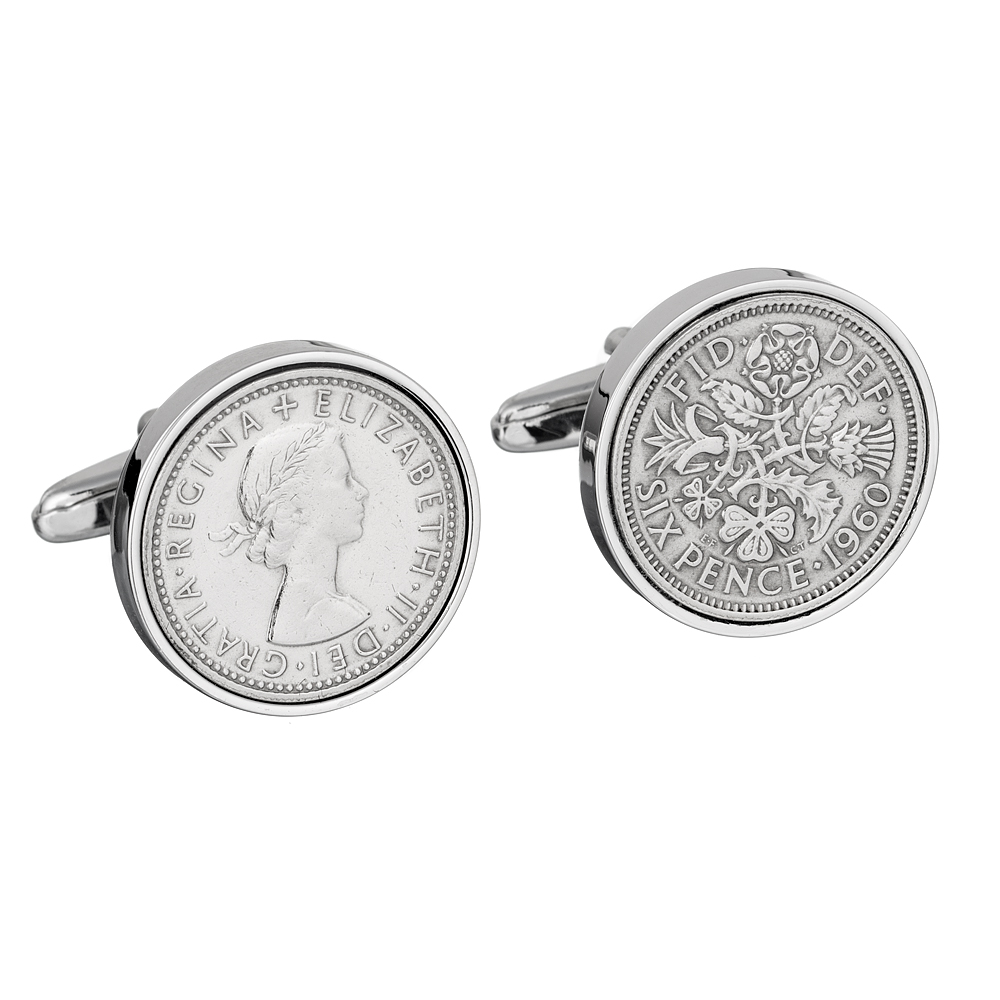
22 Jan History of the English Sixpence
Posted at 11:11h
in News
At birthdaycufflinks.co.uk we use the English sixpence in our Cufflinks, you can choose the year from 1928 to 1967.
All of our cufflinks come in a silver presentation box, and they all have a 100% satisfaction guarantee.
What is a sixpence?
A sixpence was a coin used in the British Empire beginning in 1551. One sixpence represented six pennies. The last year of use of the sixpence coin was 1967.
How did the sixpence tradition begin?
In the middle ages, the people were very superstitious. They believed that much of their life was controlled by evil spirits. Anything they could do to ward off those spirits was wise. They felt that those evil spirits were particularly active during rites of passage, such as weddings, so it was important to use good luck charms to keep the bride and groom safe on their wedding day. Any type of talisman from a horseshoe to a lucky coin was considered a good omen.
During the early 1600’s it was customary for the Lord of the Manor to give his bride a piece of silver as a wedding gift. This was symbolically represented by a sixpence coin. It later became a tradition to include a sixpence in the dowry that was given by the bride’s family to the groom. That tradition of the sixpence as a symbol of good luck continues today.
Some families have passed down the same sixpence through the generations to continue the hope for good luck to future brides. It’s also nice to seek out a sixpence minted in the year of your parents or grandparents wedding, birth years, or some other important family occasion.
Why is there a “thistle” on the back of many sixpence coins?
The thistle is the national flower of Scotland. According to legend in the 1200’s the Danes from northern Europe attempted to invade Scotland. Hiding under the cover of darkness their raid upon sleeping defenders was stopped when a barefoot raider stepped on a thistle and howled out in pain, alerting the defenders who drove the Danes away. The thistle started appearing on Scottish coins in 1470. The back of the last sixpence features a garland of roses, thistle, shamrock (three leaf clover), and leek. The words “Fid Def” are also on the back of the sixpence. This is Latin for fidei desfensor, or defender of the faith